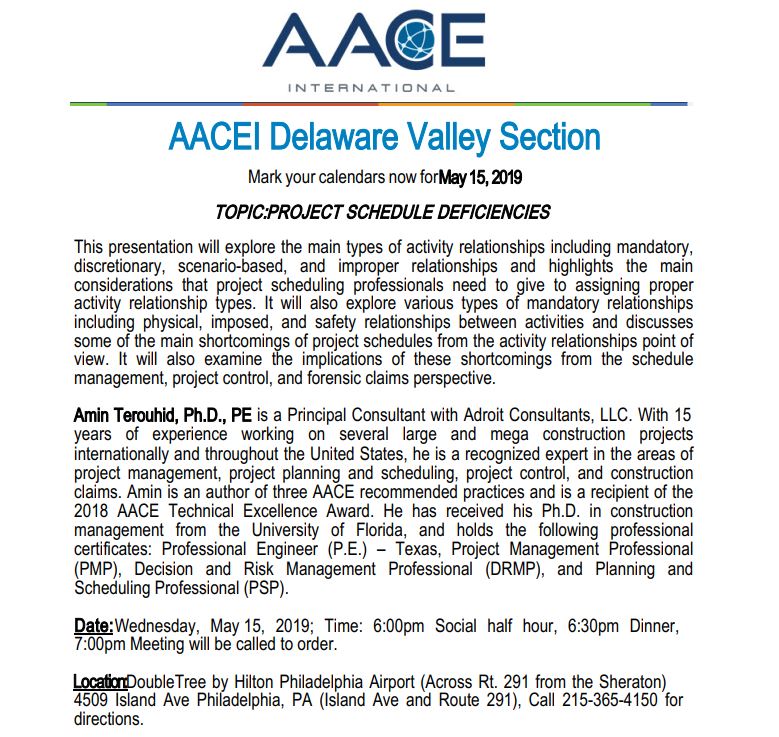On October 18, 2017, the Association for the Advancement of the Cost Engineering (AACE International) released AACE International Recommended Practice No. 92R-17 Analyzing Near-Critical Paths. Dr. Mirhadi, Adroit’s CEO and one of Adroit’s principal consultants is one of the two primary authors of this recommended practice. The AACE International Recommended Practices (RPs) are intended to be the main technical foundation of AACE’s educational, and certification products and services. The RPs are a series of documents that contain valuable reference information that has been subject to a rigorous review process and recommended for use by AACE’s Technical Board and they become references for project management practitioner throughout the world.
This recommended practice (RP) is intended to provide a guideline on analyzing near-critical paths in project schedules. Delays or unexpected circumstances may adversely affect near-critical path activities to the extent that they become critical. A near-critical path consists of one or more near-critical activities that are susceptible to the risk of becoming critical and/or causing critical path delays.
This RP will discuss the term near-critical path and the significance of near-critical paths in projects; demonstrate how to determine near-critical paths; and set forth a process for tracking, trending and analyzing near-critical paths. Here is the link to an excerpt from this recommended practice. For more information about the methods of analyzing critical and near-critical paths, please contact us for a free consultation session.
References:
http://web.aacei.org/docs/default-source/toc/toc_92r-17.pdf?sfvrsn=6
http://web.aacei.org/resources/publications/recommended-practices



